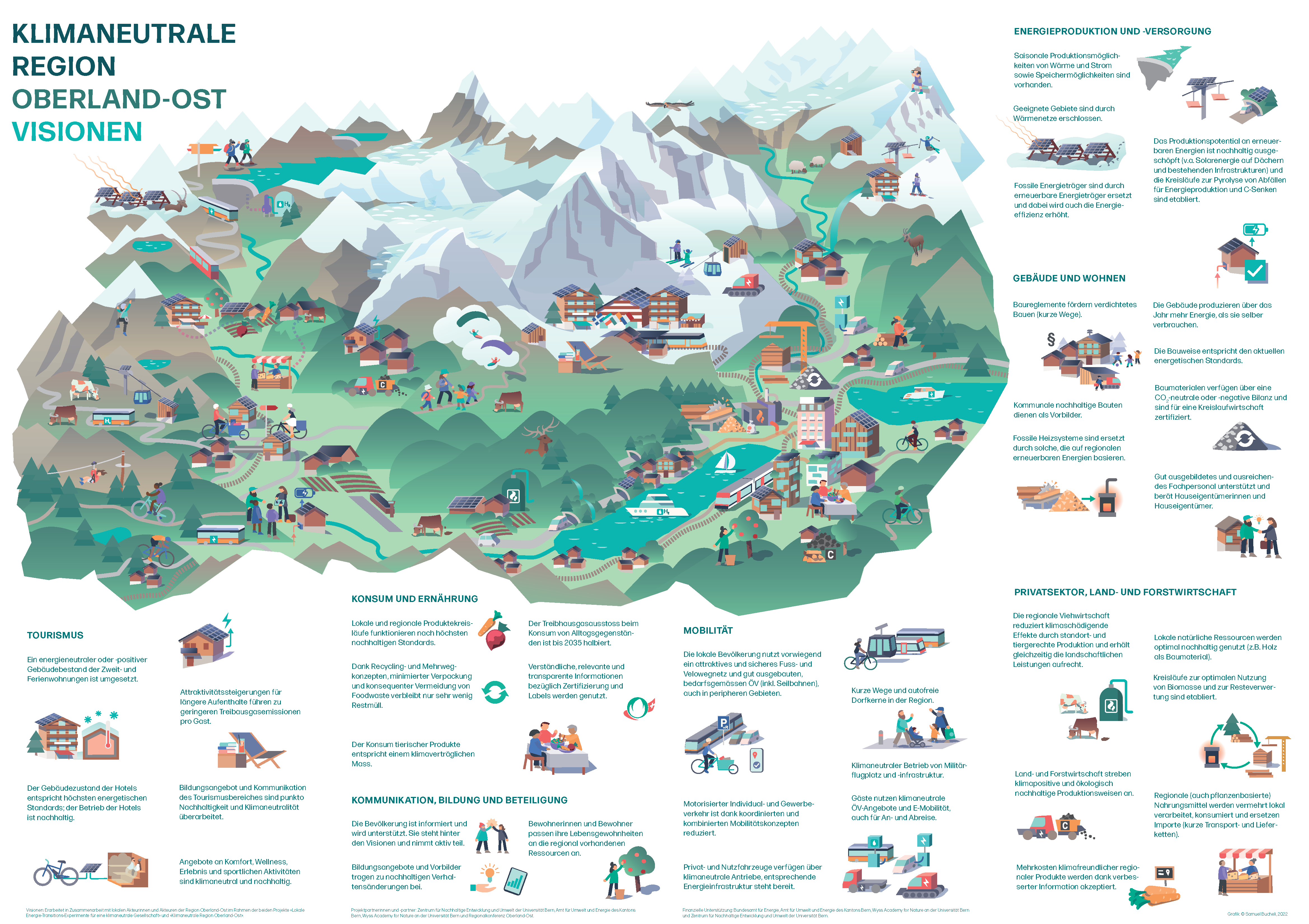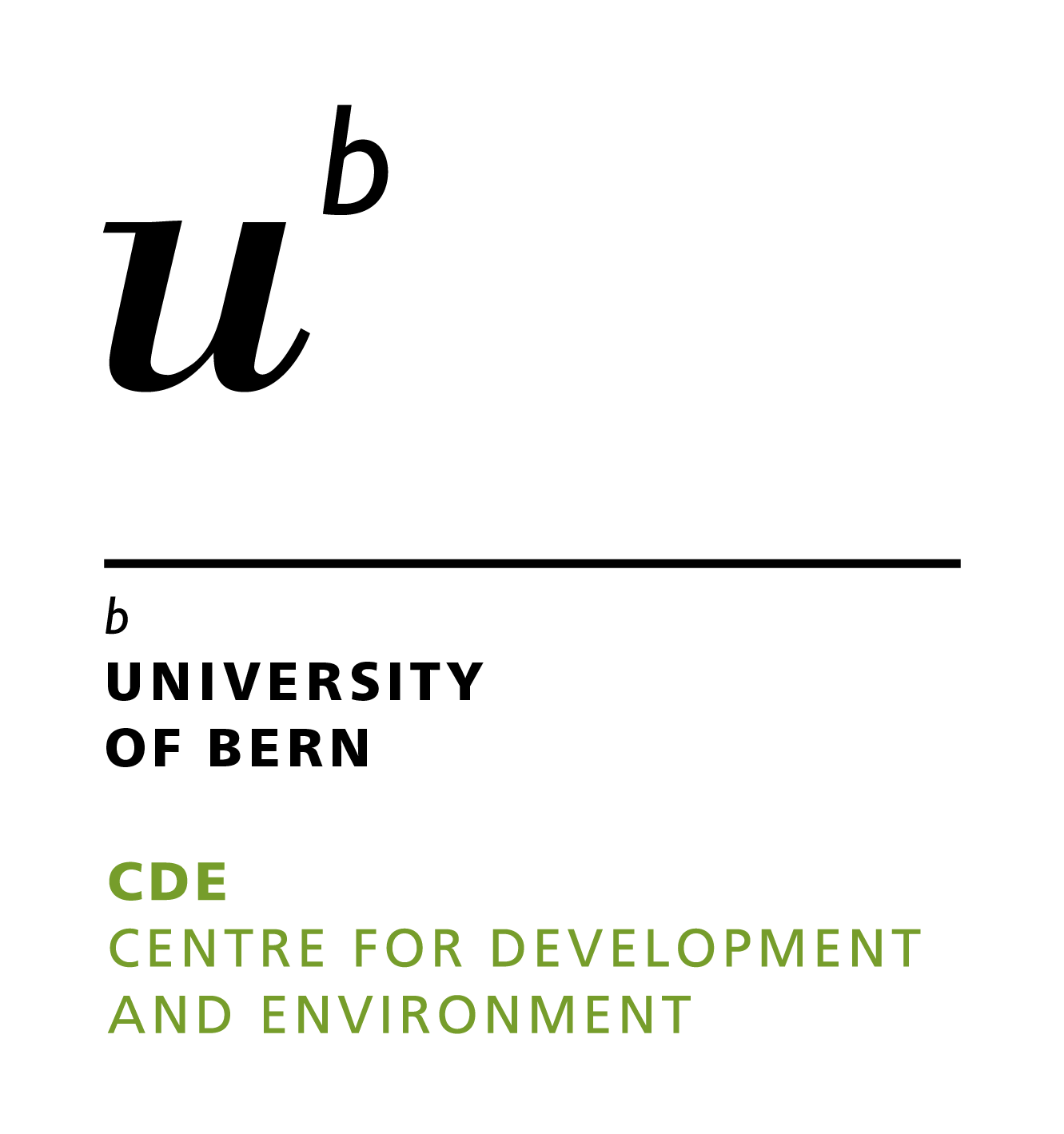6 What is ID/TD?
Learning outcomes
- Students can explain the concepts of multidisciplinary, interdisciplinary (ID), and transdisciplinary (TD) approaches, and describe the differences between these terms
6.1 Explain Inter- and Transdisciplinarity
According to Stock and Burton (2011, 1091) “sustainability is […] inherently transdisciplinary”.
But what is transdisciplinary? And what are all the other terms?
To gain a better understanding of this, watch the following video.
6.2 ID/TD case study
Insight into an inter- and transdisciplinary CDE research project: How does a region become climate neutral?
In 2019, the Oberland-Ost Regional Conference set itself the strategic development goal of moving the region towards climate neutrality. In order to put this goal into practice, a participatory strategy process was initiated with numerous stakeholders from the region. Representatives from the public sector, local clubs and associations, the tourism and mobility sector, energy producers and suppliers, the private sector and the agricultural and forestry sectors have developed a joint “vision” and “transition paths” (these describe the steps required to realize the vision). In addition, initial “transition experiments” were outlined (i.e. pilot projects that reduce regional GHG emissions, such as support for biogas production by local farmers). All of this was published in a “Transition Agenda”.
This process was initiated, accompanied and researched by an inter- and transdisciplinary team of CDE researchers from the disciplines of psychology, geography and communication sciences together with representatives of regional authorities. CDE researchers were responsible for identifying and involving key regional stakeholders, as well as facilitating a series of workshops to develop the transition agenda. In addition, a survey was conducted among the local population to find out whether they supported the vision developed by the regional representatives. The results of the survey were then incorporated into the strategy process.

The project was funded by the Swiss Federal Office of Energy SFOE (Energy Research and Cleantech Section) and co-financed by the Wyss Academy for Nature at the University of Bern and the Economic, Energy and Environmental Directorate of the Canton of Bern.
More Information on the project on the CDE-project website.
6.3 Activity
For each definition select the correct term.
A specific branch of knowledge or field of study that follows a distinct set of theories, methods, and principles.
Uses methods and concepts from one field of study to address questions or problems in another. It seeks to draw parallels and find applications across different areas of knowledge.
The integration and collaboration of multiple fields of study to address a common research question or problem. It aims to create new insights and understandings that transcend the boundaries of individual areas of expertise.
Involves a collaborative process that integrates academic and non-academic knowledge to address complex, real-world problems. It goes beyond traditional fields of study, incorporating perspectives from stakeholders, practitioners, and community members.
Research or inquiry conducted within a single field of study, focusing on deepening knowledge and understanding of a specific subject area. It relies solely on the concepts, theories, and methods specific to that field.
Involves several fields of study working alongside each other on a common topic, but without necessarily integrating their perspectives or methods. Each area maintains its own methodologies and standards while contributing to a broader understanding of the issue.
